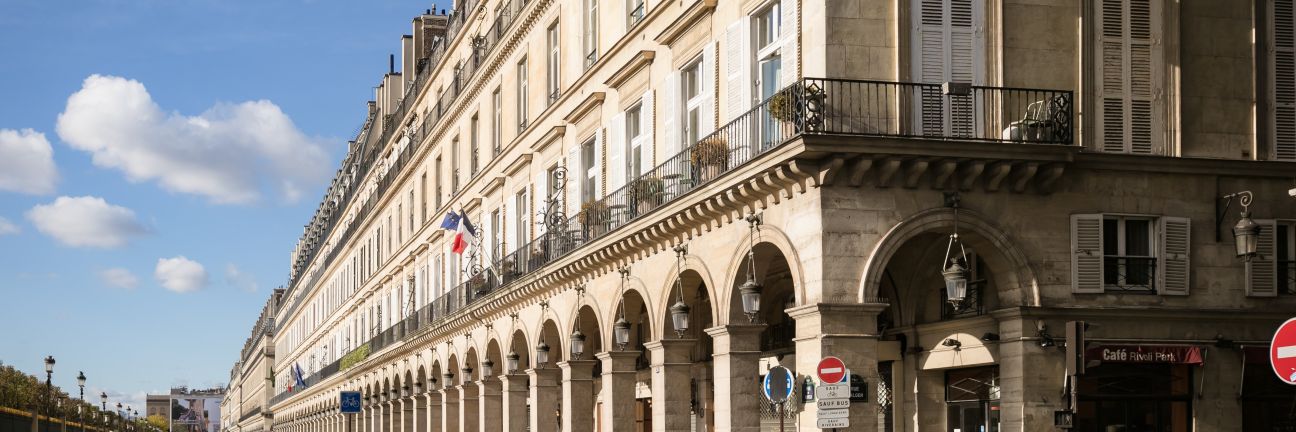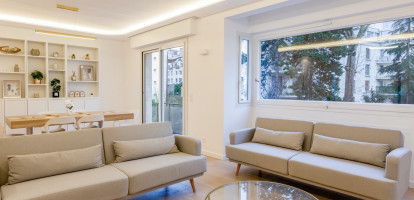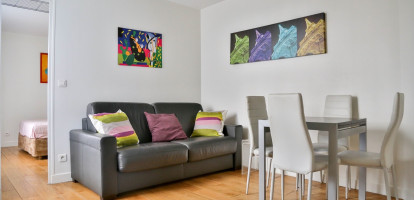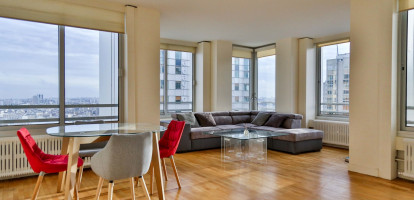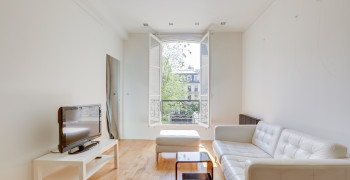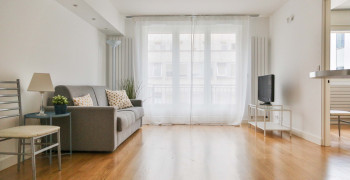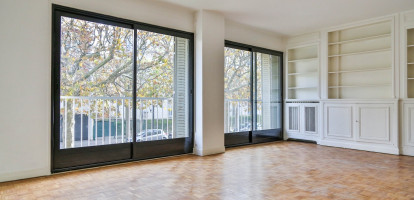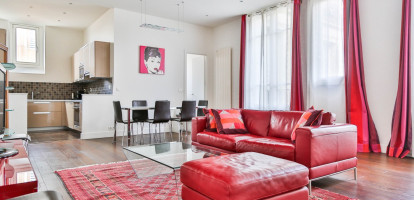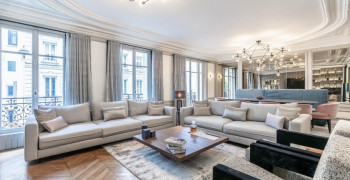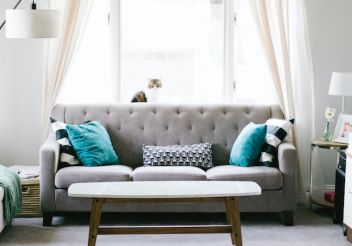Rent your apartment with a Real Estate Agency for Expats and Corporate
Summary :
Lease your furnished apartment
As the owner of a furnished or unfurnished apartment, you would like to rent your apartment, yet with the exponential choice of management of companies to be found on the web, you hesitate on whom to entrust your flat too. Normal!
Home Management is a company specializing in Management rentals. As such, Home Management can replace you in ensuring the preservation of your real estate assets and take care of the hassles during the rental period.
Take advantage of Home Management real estate expertise by contacting us to obtain valuable information on real estate new legislation, for example.
In order to prepare your apartment for rental and to give you an insight into a tenant’s view, look at what are the steps followed by a future tenant by consulting the PDF booklet "The 7 steps of the furnished rental”.
Estimated value of the rental
To get an estimated value of the rent for your apartment in Paris, here are some steps to follow:
To calculate your rent, take into account these specific criteria:
Check similar real estate listings on our Parisrental.com by using the criteria of your own apartment: Parisrental.com number of rooms, districts of where your apartment is located and around.
You can also use the rent calculator or consult the reference rent..
Consult the services offered by Home Management for the rental management of your rented accommodation.
Decent housing: what are the conditions?
Check that your apartment is in compliance with the decency guidelines imposed by law. The landlord must give the tenant a decent dwelling, that is to say a dwelling:
Click here to find out everything about decent housing
The owner-lessor must hire a company specialized in carrying out the various property diagnostics required to rent an apartment.
Mandatory real estate diagnostics before renting out an accommodation:
To find out more about the 7 mandatory diagnoses, go to our Useful Information section and read the "Pre-Rental Diagnostics"..
Having worked with these companies for many years, we recommend Exim and Form&Diag for their professionalism and responsiveness.
Visits: how to organize and optimize them?
A landlord knows better than anyone else the apartment he is renting. He may have lived in it himself. In any case, he has decorated it, and has undoubtedly made some repairs. He knows the qualities of his rental accommodation. Similarly, he knows at what time of the day it is most pleasant to visit it.
Therefore the owner-lessor can describe his apartment, as well as his environment (restaurants, gym, cinema ...), at best. Often, real estate agency descriptions are factual, yet soulless. Sometimes there are none. So, get your pen and start writing a small description of your apartment, and of the qualities that made you invest in this property.
To prepare a description of your apartment, here is a template to base your prose on (search document). Any extra information will differentiate your property, and attract the tenant corresponding to these qualities.
If you do not know the fitness centers nearby, or the neighboring markets, consult the map of Paris Rental and click on the pictograms at your disposal, taking care to fill the address of your furnished accommodation, in order to locate it. For example: 2 bedrooms in 16th district
So that the visit of your furnished apartment is maximized, here are the four points to optimize:
-
Air the apartment. A room that smells musty disappears right away. The future tenant "feels" that no one has lived there for a long time and is wary.
-
Make sure that the apartment is clean! If the dust shows, the refrigerator moldy inside, the oven greasy and the toilet bowl marked by limestone, the future tenant will turn around.
-
Organize visiting hours (or notify the agency that represents you) of the hours of the day when the apartment has the most light, and feels the most welcoming. If necessary, turn on the lights before the visit. Nothing should remain in the shadows!
Choosing your tenant: What to check in a rental file?
Even if your choice is based on the guarantees and the profile of the tenants that were sent to you, Paris Rental and Home Management recommend meeting your future tenant. Experience shows that a tenant who knows the owner of the apartment he rents will be more considerate of his housing, for it is no longer anonymous. Our office welcomes you between 9H and 18H to make introductions.
To know all the https://en.parisrental.com/blog/landlords-guide/rent-your-apartment-safely-security-deposit-various-guarantors-insurancedocuments and guarantees that you can hope for in a rental file, consult our blog.
As a landlord, you must protect yourself from unpaid bills -and the sleepless nights that go with it! If your tenant cannot pay the rent, you will pay the “taxe d’habitation” for him/her. It is the law. Unfortunatly, none of the lawful expenses enticed in order to terminate the lease with a non-paying tenant are tax-deductible.
Therefore, if the candidate is not garantied by a Company which vouches the lease on his behalf, ask the future tenant to take out a paying garantee. Today, there are young start-ups which make it simple to offer guarantees at affordable costs. For example : GarantMe.
Housing insurance: tenant and owner
For the Tenant : A multi-risk home insurance is mandatory for the tenant who wants to rent an apartment. This insurance must be taken out before entering the apartment, because once in the apartment, the tenant becomes responsible for any damage he/she may cause, but also for any damage occurring to the apartment. For example, if the tenant forgets to close the tap of his bathtub, and floods his floor and the ceiling of the apartment below, the latter will pay for all damages incurred by the water damage, unless he/she is covered by a home insurance.
For the Landlord : a PNO (Non-Occupying Owner) insurance is mandatory for occupying or non-occupying co-owners.
During the rental of the owner’s property, the tenant's home insurance covers only the tenant's belongings and water damage or fire due by his own negligence, but neither the walls and the equipment (cumulus or gas boiler, wall damaged by infiltration,...), nor the furniture -when the rental is furnished- are covered.
Consequently, the PNO insurance guarantees the coverage of the external facilities and, in the case of a furnished rental, it covers the furniture made available to the tenant.
In addition, the POL ensures the risks that could arise when the dwelling is vacant.
What are the risks covered?
- Damage caused by a construction defect
- Damage caused by lack of maintenance of the structure of the property
- Fire, even if it reaches another dwelling
- Water damage
- Natural disasters, storm
- Broken glass
- Damage caused by overvoltage of electrical appliances
- Damage due to vandalism
- Repayment of loans or rents in the event of a major incident
How much does PNO cost?
The cost of the insurance varies according to the guarantees offered, the surface of the accommodation, its location, etc. Count between 100 and 200 euros of annual subscription.
Nota Bene: the cost of PNO insurance is deductible from the property income of the occupying or non-occupying owner, if he chooses the Real Tax System.
Inventory of the premises : an important step.
The inventory is a document attached to the lease and, in the case of a furnished rental, the document is accompanied by an Inventory of furniture, appliances and linens.
Upon entering the premises of the tenant, a description of the state of housing and its equipment is duly recorded. It is established in writing in two copies, on for the two parties to the lease, landlord and lessee or their respective representatives, and can be done in two ways:
If the inventory is not established amicably between owner and tenant, the inventory will be charged either by a bailiff, or any authorized representative. To find out about these costs, visit the public service website. . Upon the departure of the tenant, a new inventory will be established. The tenant must return the rented accommodation in the same condition in which he found it, whether the lease is for an empty or furnished dwelling.
It may be that upon exit of the tenant repairs are necessary. In order to avoid any dispute, it is possible to refer to a “wear and tear” scale to determine what is normal wear and tear or what is considered damages. Also, the two parties shall refer to the list of rental repairs according to what is respectively granted to the tenant and to the landlord.
Once the Inventory of the premises is signed by both parties, the tenant will return all sets of keys in his possession.
Find out if there is damage and who is responsible
The comparison of these two documents will make it possible to establish the responsibilities of each party, if any.
The tenant must proceed with the rental repairs during the term of his lease. In the absence of maintenance during the lease, the damages will be at his charge.
- The damage generated can be of various nature, in particular:
- hole or stain on the walls
- burned carpet,
- damaged parquet floor
- armchair, lamp, broken microwave … (furnished rental)
- Responsabilité du propriétaire
If the damages caused during the rental period result from wear and tear or dilapidated housing, the repairs are the responsibility of the landlord.
3. The dilapidation
The obsolescence corresponds to a natural wear of the places due to a prolonged normal use of the housing, such as:
- paintings whose color has passed
- worn floor coverings, etc.
The damage caused by the obsolescence remain the responsibility of the landlord, and is fixed by decree.
Degradation in case of force majeure
Damages caused in case of force majeure are the responsibility of the landlord, including if the damage is of rental repairs’ nature (external & internal parts, plumbing, electricity ...). This is the case, for example, when a storm occurs.
Rental income: how to declare it?
The peculiarities of tax between renting furnished or unfurnished rentals persist.
Make sure to study the question with pencil and calculator, before renting your apartment.
Whether you choose to rent your furnished or unfurnished apartment, your rental income will be taxable in the category of property income: rents net of annual expenses, such as construction work, management fees, interest on loans, insurance. .
Property income is subject to progressive income tax and social security contributions at a rate of 17.2%.
Unfortunately, land revenue (bare or furnished rent) is not affected by the P.F.U. at 30%, "Single Lump Sum Withdrawal" consisting of 2 deductions: social security contributions at an overall rate of 17.2% and a levy on income tax set at 12.8%. These two levies result in a flat rate of 30%, which does not depend on the taxpayer's tax bracket or its reference tax income.
Unfurnished rental, or empty rental
The unfurnished rental is taxable in the category of property revenue.
If the amount of the deductible expenses is higher than the rents collected, you have a property deficit.
The property deficit is attributable to up to € 10,700 per annum on total income, excluding loan interest. The surplus, if any, is carried forward to the property income for the next 10 years.
If you invest in ancient construction, choose a property to renovate because the work is fully deductible; as such, you give value to the property while achieving tax savings. Paris Rental offers several furnished apartments for sale, which can be easily given to rent by our agency in view of the knowledge of your future property’s history.
If you invest in new, Pinel device (until end of 2021), offers a tax reduction of 12% (rented 6 years), 18% (rented 9 years) or 21% (rented 12 years) price housing within the limit of 5 500 € / M2 and 300 000 € per year. However, this device only works in "tense" geographic areas, such as Paris and its agglomeration, major cities, the Mediterranean coast. In addition, rents are capped at different amounts depending on the zone. Another limitation: tenants are subject to resource conditions calculated according to the size of the household and the geographical area.
Furnished rental
The furnished rental activity is considered a commercial activity, and the revenue derived from the rental are "Industrial and Commercial Profits".
The furnished rental allows the depreciation of the property with deducting fro rents the purchase price or construction.
Expenses related to the acquisition of the property (agency fees, notary fees, registration fees, ...) may be:
- deducted immediately (allows to create a deficit in the first years)
- added to the purchase price to be amortized.
However, it is necessary to distinguish a Professional rental activity (L.M.P.) from a Non-Professional activity (L.M.N.P.).
Renting Furnished as a Professional (L.M.P.)
It is a status reserved for landlords whose rental income exceeds both € 23,000 and the amount of other professional income of the household. This status makes it possible to deduce the totality of the deficits.
In case of sale:
This status benefits from the favorable regime of professional capital gains:
- total exemption after 5 years - when revenues do not exceed 90 000 € - and partial up to 126 000 €
-
déduction of real estate capital gains of 10% per year beyond the first five years
-
remaining taxation of long-term capital gain at the rate of 30%
-
exemption from IFI (Real Estate Tax)
Warning: Any professional depreciation mechanically increases the value if it is not exempt.
In the event of a sale, the capital gain is subject to a flat-rate levy of 19%, plus 17.2% social security contributions (non-deductible CSG) and a surtax of 2% to 6% *.
A total exemption from the flat-rate levy is foreseen after 22 years. A total exemption of the social levies is envisaged to 30 years of detention.
Non-Professional Furnished Rental (L.M.N.P.).
This is the most common status applied for rented accommodation. .
The Non-Professional Furnished Lessee (LMNP) has two choices of tax regime:
- The "Micro-bic" package: Only valid if your annual rental income is less than 70 000 €. This package allows, without any justification or accounting formalism, to be taxable only on 50% of revenue generated.
- The "Real regime" of Industrial and Commercial Benefits (BIC): Mandatory for all annual rental income above € 70,000 and optional for all annual rental income below this threshold.
The lessor in Furnished unprofessional must be aware of the collateral costs inevitable to the "Real regime". Accounting is mandatory, and an ancillary tax such as the CET (Economic Territorial Contribution) is applied. To find out more about CET, visit the government website https://www.impots.gouv.fr/portail/professionnel/cet-cfe-et-cvae
The Leaseback Statute ? also authorizes depreciation (value of the property, furniture, works, and deduction of all expenses related to the activity - co-ownership charges, acquisition costs, agency fees, interest on loans, etc.), but deficits are not deductible from the overall income. They can, however, be carried forward to the profits of the next ten years.
In case of sale of the property:
Capital gains follow the normal regime of private capital gains:
- For sales made before September 1, 2013: A decrease of 2% per full year of detention from the 5th year is allowed. This means that the capital gain will no longer be taxable from the 30th year.
- For sales made from September 1, 2013:
| Duration of ownership |
Tax Abatement by year |
Social security contributions Abatement by year |
| Between 6 and 21 years old |
6% |
1,65% |
| On the 22nd year |
8% |
1,60% |
| After the 22nd year |
Exonération |
9% |
| Over 30 years |
Exonération |
Exonération |
Explanation of the surtax on capital gains:
Sales exempt from capital gains tax are not affected by the surtax, for example those relating to the principal residence, to the first sale of a dwelling other than the principal residence, or to the duration period of detention of the property.
Sales generating a taxable real estate capital gain of more than € 50,000 are subject to additional flat-rate taxation (CGI, art. 1609 nonies G ; BOI-RFPI-TPVIE).
When the sale concerns a property belonging to several persons, the assessment of the € 50,000 threshold and the calculation of the tax are made according to the share held by each co-owners, cohabitants or PACS partners. The solution is the same for a married couple who sells a property owned jointly: for example, if the sale generates a taxable capital gain of 90 000 €, the surcharge is not due (90 000 € / 2 = 45 000 €) .
The tax rate is set at a progressive rate of up to 6% (see table below). In other words, for taxpayers in the 6% bracket, the fraction of their taxable capital gain of more than € 260,000 will ultimately be taxed at 40.5% corresponding to a flat-rate tax of 19% + social security contributions of 17, 2% + surcharge of 6%. Payment of the surcharge is made by deduction from the sale price, at the signing of the deed at the notary.
Texts of laws and jurisprudence
LAW n ° 2012-1404 of December 17, 2012 of financing of the social security for 2013
LAW 2017-1836 of 30 December 2017 Social Security Financing for 2018
Surcharge on real estate gains of more than 50 000 €
|
Amount of the taxable net capital gain (PV) included
|
Surcharge Applicable |
| Between 50 001 € & 60 000 € |
2 % PV - (60 000 - PV) x 1/20 |
| Between 60 001 € & 100 000 € |
2 % PV |
| Between 100 001 € & 110 000 € |
3 % PV - (110 000 - PV) x 1/10 |
| Between 110 001 € & 150 000 € |
3 % PV |
| Between 150 001 € & 160 000 € |
4 % PV - (160 000 - PV) x 15/100 |
| Between 160 001 € & 200 000 € |
4 % PV |
| Between 200 001 € & 210 000 € |
5 % PV - (210 000 - PV) x 20/100 |
| Between 210 001 € & 250 000 € |
5 % PV |
| Between 250 001 € & 260 000 € |
6 % PV - (260 000 - PV) x 25/100 |
| More than 260 000 € |
6 % PV |
What is IFI? (Tax on Real Estate Fortune)
“Real estate fortune tax” is an annual tax on real estate assets that only applies to private persons and not companies. The taxation will therefore be common for married couples and persons linked by a PACS.
Each household must file a tax return if their real estate assets exceed € 1.3 million as of January 1 of the tax year. (declaration 2042-IFI)
The principal residence is a property subject to the IFI. A reduction of 30% is made on the value of the principal residence; the principal residence is therefore subject to the IFI at 70% of its market value. Expenses are not deductible.
Photo by Lisa Kitano
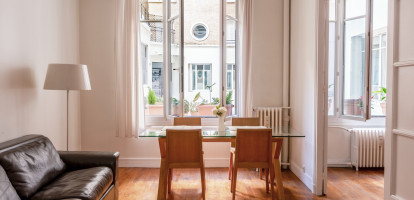


 Français
Français
